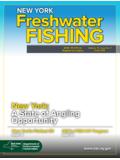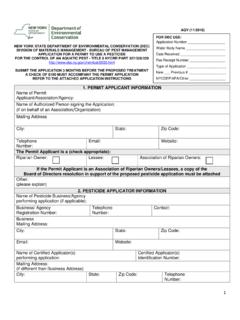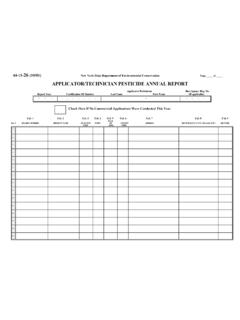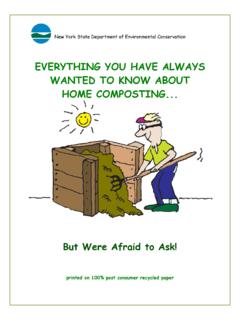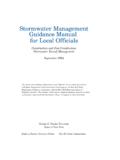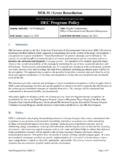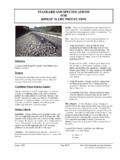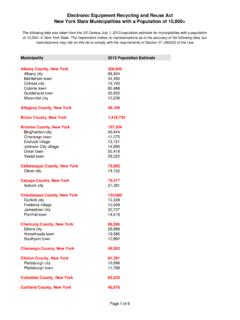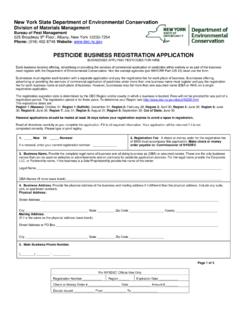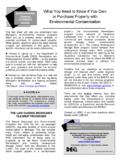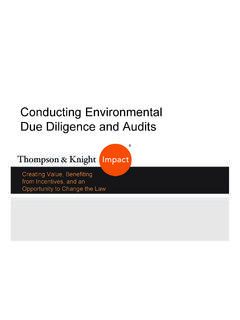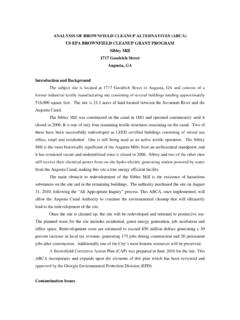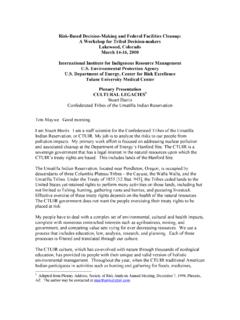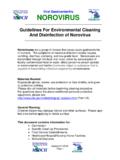Transcription of CP-51 / Soil Cleanup Guidance
1 Final Commissioner Policy, CP-51 Page 1 of 21 CP-51 / soil Cleanup Guidance New york State department of environmental ConservationDEC Policy Issuing Authority: Alexander B. Grannis, Commissioner Date Issued: October 21, 2010 Latest Date Revised: I. Summary This policy provides the framework and procedures for the selection of soil Cleanup levels appropriate for each of the remedial programs in the New york State department of environmental conservation (DEC) Division of environmental Remediation (DER). This policy applies to the Inactive Hazardous Waste Disposal Site Remedial Program, known as the State Superfund Program (SSF); Brownfield Cleanup Program (BCP); Voluntary Cleanup Program (VCP); environmental Restoration Program (ERP); Spill Response Program - Navigation Law (NL) section 176 (SRP); and the Resource conservation and Recovery Act (RCRA) Corrective Action Program.
2 It replaces Technical and Administrative Guidance Memorandum (TAGM) 4046: Determination of soil Cleanup Objectives and Cleanup Levels (January 24, 1994); the Petroleum Site Inactivation and Closure Memorandum (February 23, 1998); and Sections III and IV of Spill Technology and Remediation Series (STARS) #1 (August 1992). This document is used in conjunction with the applicable statutes, regulations and Guidance . Site-specific soil Cleanup levels, determined in accordance with this Guidance , are only applied after: the site, or area of concern, is fully investigated to determine the nature and extent of contamination; all sources of contamination are addressed consistent with the hierarchy provided in 6 NYCRR (c) or consistent with the RCRA Corrective Action Program (as appropriate); groundwater, if contaminated, has been evaluated for appropriate remedial actions consistent with 6 NYCRR (d) or consistent with the RCRA Corrective Action Program (as appropriate).
3 And impacts on adjacent residential properties, surface water, aquatic ecological resources are evaluated, as well as indoor air, soil vapor, vapor intrusion and other appropriate media. II. Policy It is DEC s policy, consistent with applicable statutes and regulations, that all remedies will be protective of public health and the environment. DEC's preference is that remedial programs, including the selection of soil Cleanup levels, be designed such that the performance standard results in the implementation of a permanent remedy resulting in no future land use restrictions. However, some of DEC=s remedial programs are predicated on future site use.
4 Further, it is not always feasible to return to a condition where no restrictions are required. Final Commissioner Policy, CP-51 Page 2 of 21 The procedures set forth herein are intended for the use and Guidance of both DEC and remedial parties to provide a uniform and consistent process for the determination of soil Cleanup levels. This Guidance is not intended to create any substantive or procedural rights, enforceable by any party in administrative or judicial litigation with DEC. DEC reserves the right to act at variance with these procedures to address site-specific circumstances and to change the procedures in this Guidance at any time.
5 Please note that this Guidance focuses only on soil Cleanup levels. All remedies must be fully protective of public health and the environment and must prevent further off-site migration to the extent feasible, with special emphasis on preventing or minimizing migration onto adjacent residential properties. A remedial party is required to evaluate and investigate, if necessary, all environmental media including soil , groundwater, surface water, sediments, soil vapor, ambient air, and biota. [See 6 NYCRR (a)(6) or RCRA Corrective Action Program (as appropriate)]. This investigation will determine if any of the referenced media are, or may be, impacted by site contamination.
6 Applicable Guidance should be consulted for media other than soil . Nothing contained in this Guidance , in itself, forms the basis for changes to previously selected remedies. However, a change in the site remedy may be considered consistent with DER-2: Making Changes to Selected Remedies (April 1, 2008). [See Section VI, Related References.] To the extent that a change to a selected remedy at a site in one of DER=s remedial programs is necessary as provided in DER-2, as applicable, the soil Cleanup Objectives (SCOs) may be considered in the evaluation of appropriate changes to the selected remedy. For sites in other programs, applicable regulations and Guidance must be used.
7 III. Purpose and Background DEC has a number of different remedial programs that were developed over time based on separate and distinct authorities. These programs use different procedures to determine the extent of soil Cleanup necessary to satisfy the remedial program goals. The purpose of this document is to set forth how soil Cleanup levels are selected for the different programs. Legislation establishing New york State=s Brownfield Cleanup Program (Article 27, Title 14 of the environmental conservation Law [ECL]) required DEC, in consultation with the New york State department of Health (NYSDOH), to develop an approach for the remediation of contamination at brownfield sites.
8 The resulting regulation includes seven sets of SCOs. Four sets provide for the protection of public health for different land uses (residential, restricted residential, commercial, and industrial); two sets provide for the protection of other resources (groundwater and ecological resources); and one set includes SCOs for protection of public health and the environment for all uses (unrestricted use). With the promulgation of the SCOs, it is necessary to discuss how the SCOs, and soil Cleanup levels generally, are arrived at for a specific site. Some key definitions in understanding how Cleanup levels for soil are arrived at follow.
9 Feasible, which means suitable to site conditions, capable of being successfully carried out with available technology, implementable and cost effective [see 6 NYCRR (s)]. Final Commissioner Policy, CP-51 Page 3 of 21 Presumptive remedy, which means a technology or technique where experience has shown the remedy to be a proven solution for specific types of sites and/or contaminant classes [See DER-15: Presumptive/Proven Remedial Technologies February 27, 2007. Refer to Section VI, Related References.] soil Cleanup level, which means the concentration of a given contaminant for a specific site that must be achieved under a remedial program for soil .
10 Depending on the regulatory program, a soil Cleanup level may be based on the regulation [6 NYCRR (a) or (b)], modified from the regulatory value based on site-specific differences, or based on other information, including background levels or feasibility. soil Cleanup levels may include: SCOs promulgated at 6 NYCRR 375-6; Supplemental soil Cleanup Objectives (SSCOs); a totals approach for a family of contaminants known as Polycyclic Aromatic Hydrocarbons (PAHs); Presumptive remedy for Polychlorinated Biphenyls (PCBs); and Nuisance Condition. soil Cleanup Objective (SCO), which means the chemical concentrations for soil Cleanup of individual chemicals contained in 6 NYCRR (a) or (b).
